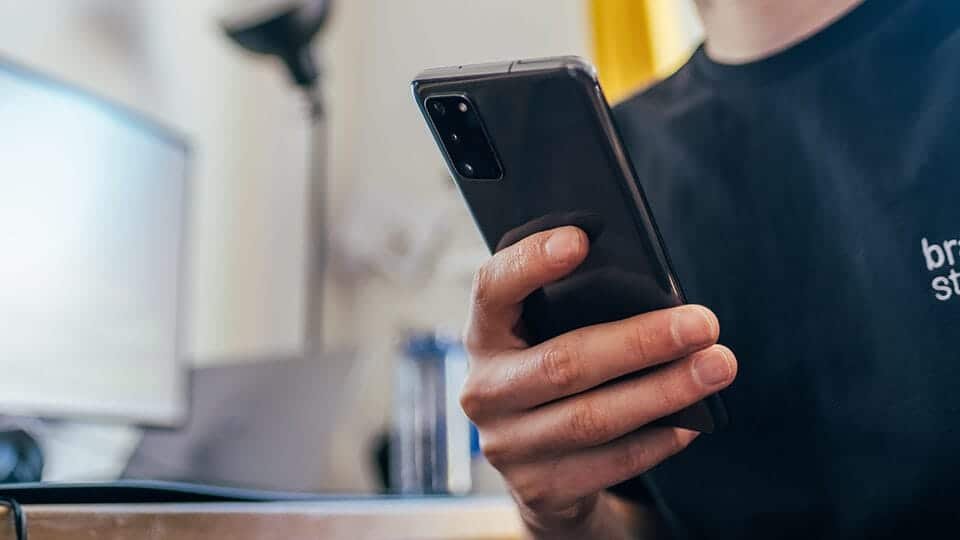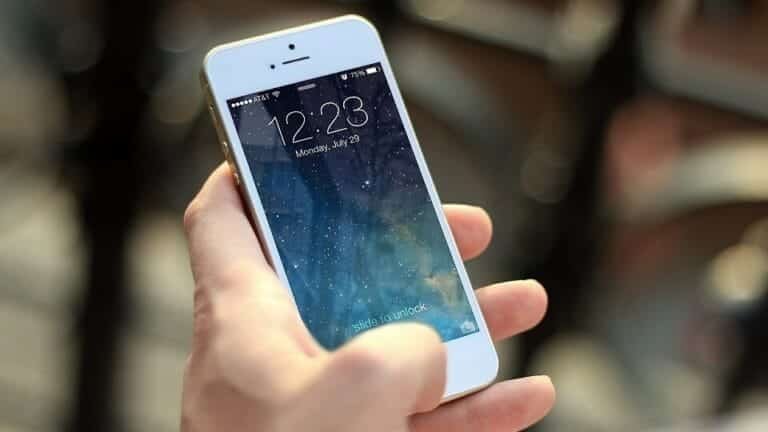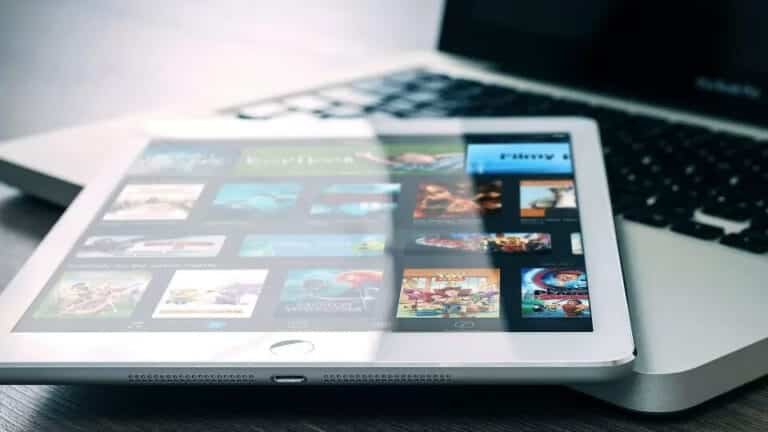How to choose a smartphone in 2023

What you need to know about the ideal modern smartphone
Buying a smartphone is usually accompanied by difficulties in choosing. What to choose – Android or iOS? Which processor is better? How many pixels should a camera have? How much memory will be enough to store all the files? Let’s find answers to these and other questions.
| CPU | 8 cores, frequency – 3200 MHz; |
| Camera | Resolution – from 108 MP, optical stabilization, several modules (2 or 3); |
| Connection | 4G, 5G ; |
| Memory | 8-12 GB of RAM and 512 GB of internal memory; |
| Battery capacity | 6000 mAh; |
| Water and dust protection | IP68 or IP69 (fully dustproof and waterproof up to 1 meter for up to 30 minutes); |
| Appearance | Stylish design, wear-resistant body. |
Basic parameters of modern smartphones
To make the right choice, you need to understand the main parameters of modern smartphones.
operating system
Today, the market is filled with smartphones with a variety of operating systems. Some of the most popular are iOS and Android.
Android

Android OS is the most widely used mobile operating system in the world 1 . The main reason for its popularity is its openness. It can be installed on smartphones, tablets and laptops of almost all brands, supports a large number of free applications, and also allows you to easily download and transfer files (without downloading additional programs).
The interface design can be completely customized, right down to the application icons. Android smartphones have memory card slots so users can expand their storage capacity (if needed).
The main disadvantage of the OS is its high vulnerability. It is quite easy to hack and “infect” it with viruses. Another drawback is poor support for outdated equipment models (updates are not released).
iOS

Another popular operating system is iOS . It is closed source, meaning it is used only by Apple. This allows you to better protect users’ personal data and easily synchronize Apple devices with each other.
All iOS-based gadgets are supported for many years (even outdated models can be updated). They have a lot of features and exclusive applications that are not available on smartphones of other operating systems (for example, Apple Music and Apple TV services).
But there are also disadvantages. For example, on iOS you cannot customize the interface design. There are also difficulties with downloading files from the Internet (especially audio and video) – the system requires you to download special programs, for example, “Files”.
Other OS
There are other operating systems on the market. But they are practically not sold or serviced in Russia (Sailfish OS, Tizen OS and KaiOS).
OS shells
Well-known smartphone manufacturers usually do not install a “clean” version of Android. Instead, they develop shells that are their own modifications of the system. They have changed both the interface and appearance, as well as the functions of the device. The most popular shells are:
| One UI (Samsung Galaxy) | It has many personal company services: for example, S Health, with which you can monitor your health parameters; S Pass, which stores passwords from all sites and applications in the cloud; |
| MIUI (Xiaomi) | It’s easy to customize the interface to suit your personal preferences: adjust the screen grid, hide icon labels on the desktop, and more; |
| Realme UI (Realme) | This shell has a laconic and simple design, a small number of functions and services. It is the closest thing to a “pure” system compared to other shells; |
| Magic UI (Honor) | Visual and large icons are a feature of this system. It opens up great opportunities for the user: managing a smart home, adding a personal medical record, and so on. |
Manufacturers regularly create new versions of their own interfaces, updating the appearance and improving various functions. Not every new smartphone gets a fresh shell, but only top-end and mid-segment models no older than the last and the generation before last. Budget smartphones almost always remain on the sidelines.
The Android system is updated like shells, but not often, as it is time-consuming and expensive. Preference is given to popular mid- and top-end smartphones. Currently, you can buy devices based on Android 13, released in August 2022.
Conclusion
It is objectively impossible to choose the best OS for a smartphone. Each has its own advantages and disadvantages, so you need to make a choice based on your own needs.
CPU
All modern smartphones, like computers, have their own “brain”, which is called a “processor”. CPUs come in 1, 2, 4, and 8 cores – the more cores, the faster and more stable the smartphone will perform several tasks simultaneously.
Number of Cores
The number of cores is one of the indicators that determines the speed of a gadget, its performance and level of energy consumption. The larger it is, the more powerful and faster the smartphone. Most modern models have an eight-core processor. However, not all cores have the same performance. There are weaker gadgets (up to 1800 MHz), which are suitable for telephone conversations and watching video files, regular ones (about 2500 MHz), designed for taking photos and videos, and powerful ones (from 3200 MHz) – for games, file processing and working with neural networks. ).
Performance
Another important characteristic is the clock frequency. It shows the number of processes that the gadget can perform in one second. The indicator is measured in Hertz. The minimum acceptable parameter value for modern smartphones is 1000 MHz.
Chipsets
The most popular chipsets for modern smartphones:
- Bionic (high-performance, average – 3000 MHz, installed on Apple smartphones);
- Exynos (average in performance, from 1800 to 2800 MHz, installed on Samsung models);
- Snapdragon (powerful, average 2800 MHz, found in many Android smartphones);
- Kirin (one of the most energy efficient, installed on Huawei);
- Dimensity (energy efficient and powerful, average 2800 MHz, can be found on Xiaomi smartphones).
- Helio – chips produced in several lines (budget Helio A, mid-range Helio P, high-performance Helio X, gaming Helio G). They use PowerVR and Mali graphics accelerators. Helio X and Helio G are in no way inferior in power to more well-known manufacturers.

Major manufacturers of processors for smartphones
The main manufacturers of processors for smartphones are now:
- Apple (high-performance, installed only on iPhone, average – 3000 MHz);
- Samsung (installed on some Samsung models, performance level – average, from 1800 to 2800 MHz);
- Qualcomm (considered the best for Android OS due to high performance, average 3000 MHz);
- HiSilicon (installed on Huawei and Honor smartphones, the main distinguishing feature is economical battery consumption);
- MediaTek (installed on Xiaomi smartphones, they are more affordable).
Popular mobile processor manufacturers
The international analytical company Counterpoint Technology Market Research has published a report on global mobile processor manufacturers for the first quarter of 2022 2 . According to the researcher’s infographics, it is clear that MediaTek took the leading position in shipments in the smartphone processor market with an indicator of 38%. Qualcomm was in second place with a share of 30%, and Apple was in third (15%). The infographic also features the following manufacturers:
- Unisoc (11%);
- Samsung (5%);
- Hisilicon (1%).
In terms of revenue from mobile processor manufacturing companies, the picture is completely different. The first place is occupied by Qualcomm (44%), the second by Apple (26%), and the third by MediaTek. Samsung took fourth position in the chart (7%), followed by Unisoc (3%) and Hisilicon (1%).
conclusions
To determine the performance of a particular smartphone, you can use benchmarks – the results of various synthetic tests. The value of the points shows the power of the gadget – the more, the more productive the device. The benchmark allows you to get a general idea of the upcoming purchase.
Connection
Connecting a smartphone to the Internet can be done using 3G/4G modules, standard means of mobile operators, or using a Wi-Fi module.
Modern standards of voice communication and mobile Internet

In Russia there are now four standards for voice communication and the Internet:
- 2G. It has a low data transfer rate (maximum 0.4 Mb/s), includes two bands (GSM-900, DCS-1800) and is intended for calls from older smartphone models;
- 3G . Works in most populated areas, has two bands (UMTS-900, UMTS-2100) and a maximum data transfer speed of 42 MB/s;
- 4G . High-speed communication (up to 300 Mb/s) with a large number of bands (LTE-800, LTE-900, LTE-1800, LTE-2100, LTE-2300, LTE-2600);
- 5G . This standard has a speed of 580 MB/s.
Number of SIM cards
Many smartphones support one SIM card, but there are models with an additional slot – this is convenient for users with two phone numbers.
eSim

eSIM is a technology in which a SIM card is built directly into the smartphone itself. That is, it cannot be physically removed from the device. The main advantage of eSIM is the ability to have several phone numbers at once (up to 5). You can find this function only in the latest models of gadgets – if this feature is not present, then you will not be able to activate it.
WiFi

A device’s support for the Wi-Fi standard means it can achieve maximum data transfer speeds. In fact, this figure depends on many factors (for example, the distance between gadgets and the presence of interference).
- 6 (802.11ax) – ensures the smartphone operates in one of two bands (2.4 or 5 GHz), reaching a maximum speed of 9.6 Gbit/s;
- 5 (802.11ac) – ensures the device operates in the 5 GHz band, reaching a maximum speed of 6.77 Gbit/s;
- 4 (802.11n) – ensures the gadget operates in the 2.4 or 5 GHz bands, reaching a maximum speed of 600 Mbit/s.
Bluetooth

Bluetooth – wireless data transfer from one device to another. The function has several specifications – support for a certain version affects compatibility between gadgets.
- Bluetooth 5.0 (has a high data exchange speed of 2 Mbit/s);
- Bluetooth 5.1 (compared to the previous version, it more accurately determines the location of the device, the speed remains the same);
- Bluetooth 5.2 (features low energy consumption and improved security of information exchange).
As a rule, each subsequent version is aimed at gradually improving the capabilities of wireless data transmission. These include: energy savings, connecting a large number of devices, range and speed.
NFC

NFC is a function that allows you to connect two devices contactlessly. It is mainly used in payment systems to pay for purchases via smartphone.
conclusions
Communication quality is an important parameter for a smartphone. Therefore, it is necessary to select a model based on your needs and place of residence.
Screen
The comfort of using a smartphone is ensured by the display, which not only occupies a significant area of the device, but also takes the main load during operation. When choosing, you need to pay attention to such important parameters as screen resolution, screen diagonal and display type.
Screen manufacturing technology and matrix

The quality of the picture on the smartphone display depends on the screen manufacturing technology. Today, all gadgets have the following matrices installed:
- TN – the most primitive option, found on budget models, has a small viewing angle (up to 60 degrees);
- IPS (or SFT) is the most popular technology, characterized by high image contrast and a wide viewing angle (178 degrees);
- OLED – multilayer display with high image realism and contrast, has a maximum tilt angle (180 degrees);
- AMOLED – the same technology (as the previous one), but with lower power consumption;
- Super AMOLED is an improved version of AMOLED, which is used in almost all the latest Samsung models.
Diagonal
The display diagonal affects the ease of use of a smartphone. The large screen (6-6.5 inches) is well suited for viewing photos and videos, reading, and working (for example, with tables and text). A small display (4-4.5 inches) is typical for compact models.
Resolution and pixel density
Screen resolution is the number of pixels across the width and height of the matrix. It affects the quality of the content. The higher this value, the better. The most common options are HD+ (1600×720) and Full HD+ (2400×1080). In expensive models you can find displays with a resolution of 4K (3840×2160).
The detail and clarity of the picture depends on PPI (pixel density). It refers to the number of pixels per inch of screen. The higher this indicator, the better the quality of the smartphone’s image. It is generally accepted that the human eye can see individual pixels up to 300 PPI, but above this value it is no longer possible. Therefore, a comfortable minimum is 300–350 PPI, a figure of 400–450 PPI is considered quite good, and more than 500 PPI is considered flagship.
Brightness
Brightness shows how the smartphone display copes with different levels of backlight (for example, in the sun). The indicator is measured in nits (cd/m²). Modern devices usually have displays with brightness ranging from 500 to 1500 nits.
Screen refresh rate
Another important parameter is the screen refresh rate. It reflects the smoothness of the image and is measured in Hertz. At a high frequency (for example, 144 Hz), it increases – the display is updated more often, and small jerks disappear. The standard value of this indicator on modern gadgets is 60, 90 and 120 Hz.
conclusions
The screen is the first thing users pay attention to when purchasing. It is important that the image is bright, clear and of high quality.
Memory
RAM affects the speed of all applications, especially dynamic ones (for example, loading “heavy” games or watching high-definition videos). Internal memory is an indicator of how much information can be stored on a smartphone.
Reading speed of different versions
Read and write speed is an important parameter of built-in memory. Its value determines how quickly the smartphone will work in applications, games, and so on. Modern entry-level gadgets are equipped with eMMC drives, mid-segment smartphones are equipped with UFS 2.x, and high-end phones are equipped with UFS 3.x. For example, eMMC 5.1 storage is ten times slower compared to UFS 3.1.
RAM
The amount of RAM is a key indicator for those who plan to use a large number of applications (from 100 pcs.). It is directly related to the speed of the smartphone from the programs that are running on it simultaneously. The optimal value for using the device without freezing is from 8 GB.
Built-in memory
Built-in memory – a place to store photos, videos, documents, books and music. Therefore, if a smartphone is purchased to work with files, you should find out how much permanent memory it has. The recommended value for the indicator when actively using the device is from 256 GB.
Memory card slot

For many smartphones, the storage capacity can be increased using a memory card. This feature is not available on iOS devices.
conclusions
For users who do not intend to store a large number of files on their device, it is better to focus on average memory values (8 GB of RAM and 256 internal). If you are not sure about this, you can purchase a smartphone with a flash card slot to increase the storage capacity if necessary.
Battery
The battery is responsible for the operating time of the smartphone, and, accordingly, for convenience and comfort.
Battery type
Modern smartphones have two types of batteries: lithium-ion (Li-ion) and lithium polymer (Li-Pol). The average user is unlikely to feel the difference, but it is there. In terms of chemical composition, a lithium-ion battery contains a porous separator, and a lithium-polymer battery contains a microporous gel electrolyte. The first type requires a rigid body, due to which it cannot have any shape and size. The second type is compact, lightweight and highly variable.
As for the removability and non-removability of the battery, everything is simple. When worn out, the first type can be replaced independently, and the second type can only be replaced at a service center.
Battery capacity
The operating time of the smartphone depends on the battery capacity. A value of 3500-4000 mAh is enough for moderate use for 10-12 hours.
Fast charging

The presence of fast charging allows you to fully charge your smartphone in just 1.5-2 hours. Visually, it does not differ much from a standard wired device (it has an enlarged power supply). So, the voltage and current of standard charging are approximately 5 W and 2 A, while fast charging is 20 W and 5 A.
Wireless charger

An option that is common to many of the latest smartphone models is wireless charging. The principle of its operation is that the device is installed on a special station, and the electric current is transmitted from it using the induction method.
conclusions
Battery capacity directly affects the operating life of a smartphone. The more powerful the gadget, the larger it should be. The biggest battery drains are the display, internet, camera, games and GPS.
Cameras
If you are creative or work professionally with photos and videos, you need to choose from the top models (with 3-4 modules). For amateur selfies, any modern camera will suffice.
Number of modules

Nowadays, it is difficult to surprise anyone with the presence of several cameras on a smartphone. The wide-angle lens is designed for everyday photography, the ultra-wide-angle lens is for capturing large spaces, the portrait lens is for blurring the background, the macro module is for highlighting small objects, and the zoom is for bringing distant objects closer.
Camera resolution
To make your photos juicy and clear, you need to choose a smartphone with high-resolution cameras (from 48 MP).
Optical and digital stabilization
An important characteristic of the camera is stabilization. It is needed in order to neutralize “shaking” in the video and blurriness in the photo. Stabilization can be digital or optical. With the first type, vibrations are removed by trimming the image area, and with the second, thanks to a special mechanism that moves the entire matrix as a whole, and not the image across it. Optical stabilization has a number of advantages over digital stabilization. Photos are brighter, clearer and with less noise.
Cutout for front camera
Manufacturers strive to produce smartphones whose displays occupy almost the entire front part. Because of this, there is a need for a cutout to house the front camera. In modern gadgets, there are usually three types of cutouts:
- U-shaped (semi-oval shape);
- O-shaped (full hole on the screen);
- “Unibrow” or “bangs” (long trapezoidal cutout with a set of sensors).
The third option is rare lately; it remains only with Apple and some other smartphones equipped with 3D face unlocking.
A retractable camera, as well as an under-screen camera, can replace the cutout.
conclusions
If the smartphone will be used to create content, you need to pay attention to the number of modules in the camera (when there are many of them, there is more variability in creating photos and videos), resolution (the higher, the better) and stabilization (optical is preferable).
Additional options
Depending on the manufacturer, smartphones have many additional features.
Housing materials
The case material is not an important criterion when choosing a smartphone, but it is still worth paying attention to. Metal, leather, ceramics, glass, wood – these materials are actively used in the decoration of smartphones. Rubber and steel are common components in the design of rugged devices.
However, in most cases, manufacturers prefer plastic. This is an inexpensive material that is lightweight, durable, and wear-resistant. To give a plastic case a more attractive look, manufacturers combine it with matte or glossy surfaces, add bright colors and gradient transitions.
Fingerprint login

A fingerprint scanner is an option that many modern gadgets support today. Used to quickly unlock the display, open certain applications, automatically enter passwords and pay.
Face recognition

Facial recognition is an interesting feature that is found in almost all the latest smartphone models. This is a kind of scanner that remembers the user’s features (for example, the width of the nose, the distance between the eyes, the shape of the chin, the length of the jaw) in order to subsequently compare them to unlock the display.
Water and dust protection

Gradually, protecting your smartphone from dust and water is becoming a common feature. Many modern devices can withstand moisture and solid particles, as well as short immersions under water. This is usually stated by the manufacturer (indicating the degree of protection of the device).
In the description of the characteristics you can see the designation – IP code. The first number (0-6) shows the class of protection against dust, the second (0-9) – against water. The higher the number, the more secure the gadget is. So, IP68 and IP69 are the current maximum levels of security.
conclusions
Device manufacturers are constantly coming up with new and interesting features. Whether they are necessary or not – each user must decide for himself.
Top 10 best-selling smartphones of 2022
The analytical company Counterpoint Technology Market Research has compiled a list of the 10 most popular and best-selling smartphones in the world in 2022 3 . The first four lines of the ranking are occupied by gadgets produced by Apple. The leader of the list is the iPhone 13 with a market share of 5.5%, the iPhone 13 Pro Max is slightly lower – 3.4%, then the iPhone 13 Pro – 1.8%. Fourth place went to the iPhone 12 with an indicator of 1.6%. The following lines were occupied by:
5. Galaxy S22 Ultra 5G (1.5%);
6. Galaxy A13 (1.4%);
7. iPhone SE 2022 (1.4%);
8. Galaxy A03 Core (1.4%);
9. Galaxy A53 5G (1.3%).
The last place in the top 10 best-selling smartphones of 2022 is given to the Chinese model Redmi Note 11 LTE from Xiaomi (1.1%).
Expert review on choosing a smartphone
Sergey Kuzmenko, senior specialist in testing digital products at the Center for Digital Expertise of Roskachestvo, shares his feedback on choosing a smartphone :
“The main characteristics when choosing a smartphone: battery (from 3000 mAh), camera (from 48 MP), screen (6-8 inches) and processor. It is also worth paying attention to the RAM capacity (from 8 GB). All other characteristics (operating system, case material, design, connection quality, etc.) are selected based on the priorities of a particular user.”
Popular questions and answers
Popular questions from readers are answered by Sergei Kuzmenko, senior specialist for testing digital products at the Roskachestvo Center for Digital Expertise , and Evgeniy Chertok, head of the IT department of software developer Reksoft .
What can and cannot be saved on when buying a smartphone?
Sergey Kuzmenko:
“Everything directly depends on the needs that are presented to the smartphone. If this is primarily a means of communication, and not a media center, then you can go through the new budget models. If a smartphone is considered as an alternative to a camera, then it is necessary to build on the indicators and number of lenses.
Some people buy purely gaming models, which are also on the market – they are characterized by high performance. Having understood why a smartphone is needed, you can save on what is not needed, because flagships from different manufacturers try to combine all user needs, thereby making the widest possible coverage.”
Is it necessary to always buy only the latest smartphones?
Sergey Kuzmenko:
“Yes, it is advisable to buy smartphones of the latest models. The fact is that many manufacturers do not support their device for so long after release (Apple is an exception) – a year or two maximum. Thus, it stops receiving important updates, including security ones.”
What to look for when buying a used smartphone?
Evgeniy Chertok:
“Here are some consistent recommendations:
1. First, decide on your budget and the purpose of purchasing a smartphone. If you need it for games, then the priority parameters are power, battery, sound and screen. If, for example, for fishing, then “indestructibility”, battery life, geolocation, and a flashlight are important. For calls, the quality of communication plays a role, and for the Internet at the dacha – the external antenna connector and Wi-Fi distribution. I think the principle is clear.
2. Next, sort the primary (required) characteristics of the phone and the secondary (desired) ones. Find an aggregator that allows you to select products based on a set of indicators and budget. Indicate the price and required characteristics. If there are many models in the filter, gradually introduce secondary parameters. Sort the resulting 5-10 smartphone options by rating or popularity.
3. Choose the cheapest models. Read the reviews on them, starting with the negative ones. Perhaps some problems will be critical for you. Then make your final choice. By the way, you may be satisfied with the price of the new model.
4. Finally, there is the matter of faith. Do you trust a salesperson who has three sales, or one who has 10 years of experience and hundreds of sales? I would recommend searching for stores and companies. It is clear that you can buy cheaper from a private seller, but there is always a risk.
For a company that specializes in reselling used phones, it is lower, usually there is a 3-6 month warranty and a receipt. I don’t recommend buying from the stores that are often found near train stations and metro stations. There it is easy to run into a stolen phone or a device with defects. It seems to work, but Wi-Fi drops out periodically. You can take one of these to a store under warranty.”
How is a refurbished phone different from a used one? Which option is better and more reliable to buy? Why?
Evgeniy Chertok:
“A used one is just a phone that has been used. It may have defects. And a restored one (if this is not a hoax) has, as a rule, undergone professional repairs or replacement of the filling, as well as performance monitoring. Sometimes restoration is done at authorized service centers. Such smartphones are usually sold through used phone stores. This is, of course, better, since the devices are tested and have a small guarantee.”


![[2023] 13 recommended 10-inch tablets Introducing standard and popular models](https://freemegatech.com/wp-content/uploads/2023/12/01-8.jpg)




